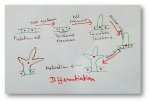Worksheet on Human Body, Health and Hygiene
Worksheet on human body, health and hygiene contains various types of questions on group of some bodily organs performing a specific function in the body forms a system.
I. Answer the following question:
(i) How can we keep the muscular system in proper condition?
(ii) What protects the lungs and the heart?
(iii) Which system helps in providing energy to the body?
(iv) Name the organs forming the nervous system.
(v) Name the seven bodily systems performing different functions of the body.
II. Fill in the
blanks:
(i) Bones in the body form the _________ system.
(ii) The rib-cage in the chest protects the _________ and the heart.
(iii) Digestion of food begins in the _________.
(iv) _________ blood is carried by veins and _________ by arteries.
(v) _________ controls all the functions of the body.
III. Match the following:
(i) Bones (a) digest food
(ii) Kidneys (b) pumps blood to arteries.
(iii) Brain (c) filters urine
(iv) Heart (d) give shape to the body
(v) Stomach (e) controls the functions of the organs
Check the answers of worksheet on human body, health and hygiene:
Answers:
I. (i) We can keep the muscular system in proper condition through regular exercises, morning walk, jogging, etc.
(ii) The rib-cage in the chest protects the lungs and the heart.
(iii) Digestive system helps in providing energy to the body.
(iv) Brain, spinal cord and nerves are the organs forming the nervous system.
(v) The seven bodily systems performing different functions of the body are skeletal system, muscular system, digestive system, excretory system, circulatory system, respiratory system and nervous system.
II. (i) skeleton
(ii) lungs
(iii) mouth
(iv) Impure, pure
(v) Brain
III. (i) Bones (d) give shape to the body
(ii) Kidneys (c) filters urine
(iii) Brain (e) controls the functions of the organs
(iv) Heart (b) pumps blood to arteries.
(v) Stomach (a) digest food
From Worksheet on Human Body, Health and Hygiene to HOME PAGE
Recent Articles
-
Differentiation, Dedifferentiation and Redifferentiation | Definition
Apr 21, 25 01:16 PM
Cells from the root apical meristem and shoot apical meristem the camera that differentiate , mature to perform different functions. This process by which the cells undergo different major structural… -
Explain about Growth in Plants |Definition of Growth & Differentiation
Feb 27, 25 02:07 PM
Growth is a permanent increase in length or volume of an organism that brought upon by an increase in its dimensions due to synthesis of new protoplasmic material. -
Definition of Respiratory Quotient | calculation | Application | Plant
Dec 02, 24 12:09 AM
Definition of respiration quotient- the ratio of the carbon-dioxide evolved to that of the oxygen consumed by a cell, tissue, plants or animals in a given time is called respiratory quotient. It is us… -
Amphibolic Pathway | Definition | Examples | Pentose Phosphate Pathway
Jun 06, 24 10:40 AM
Definition of amphibolic pathway- Amphibolic pathway is a biochemical pathway where anabolism and catabolism are both combined together. Examples of amphibolic pathway- there are different biochemical… -
Respiratory Balance Sheet | TCA Cycle | ATP Consumption Process
Feb 18, 24 01:56 PM
The major component that produced during the photosynthesis is Glucose which is further metabolised by the different metabolic pathways like glycolysis, Krebs cycle, TCA cycle and produces energy whic…




New! Comments
Have your say about what you just read! Leave me a comment in the box below.